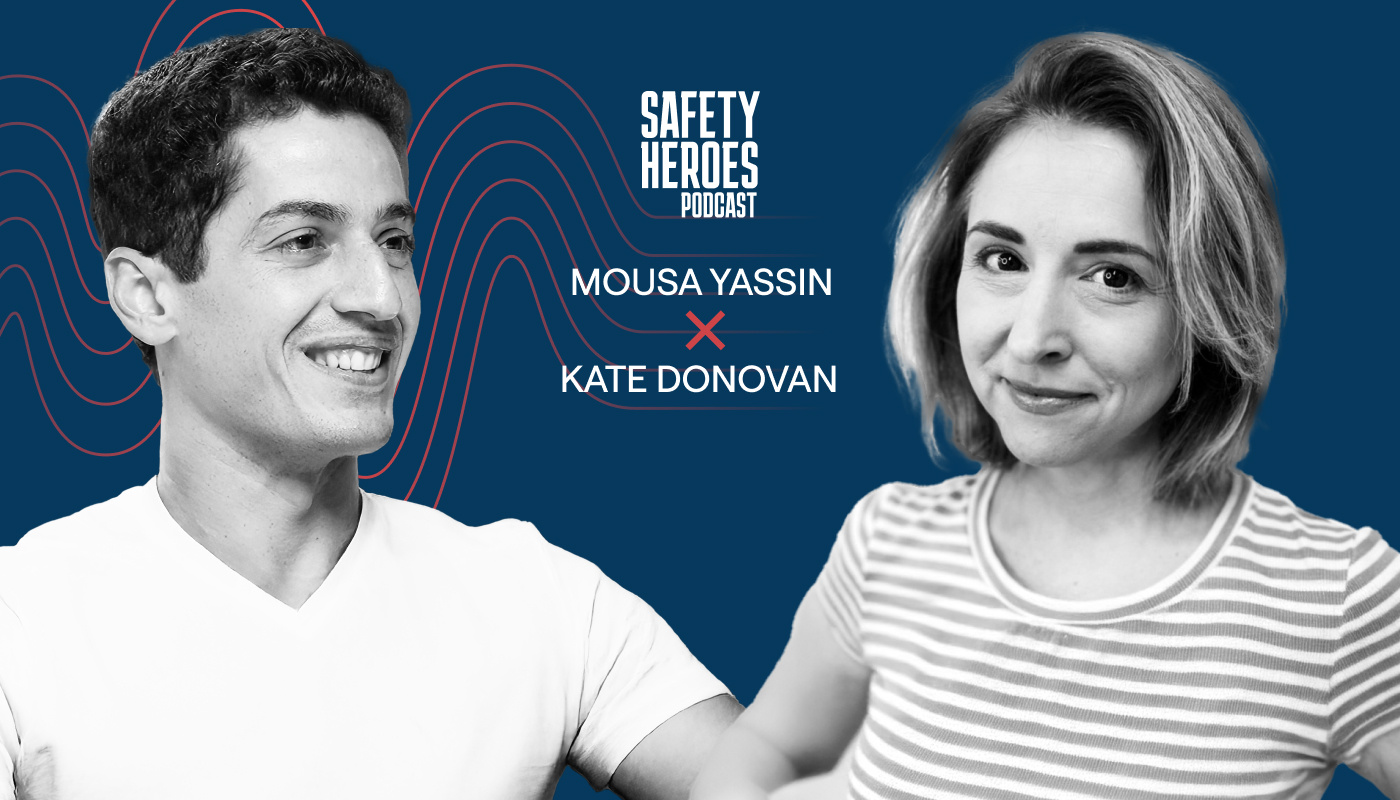🎙 Taking Safety Conversations from Inspiration to Action.
Guest: Kate Donovan, Senior Attorney at the Resources Defense Council
Host: Mousa Yassin, CEO & Founder of Pixaera
Plastics and chemicals have become an unavoidable part of modern life, but their impact on our health is only now coming into full focus. In this episode of Safety Heroes, Mousa Yassin sits down with environmental attorney Kate Donovan to discuss the hidden dangers of microplastics and PFAS.
Kate shares insights on how these toxic substances infiltrate our food, water, and even our bodies. She also provides practical advice on how to minimize exposure and what policy changes are needed to tackle this growing crisis.
"We are ingesting a pen cap full of microplastics every day. Children are even being born with microplastics and PFAS in their bodies." - Kate Donovan
Episode Summary
Kate shares eye-opening insights on the intersections between environmental law, public health, and corporate accountability, challenging the way we think about sustainability and the role of businesses in shaping a cleaner, safer future.
The conversation explores the widespread presence of microplastics and PFAS in our daily lives. Kate Donovan highlights their health risks and shares practical ways to reduce exposure. She also discusses regulatory efforts and the need for policy changes to combat plastic pollution and toxic chemicals.
Key Takeaways
- Microplastics are everywhere: In water, food, dust, and air.
- PFAS chemicals are nearly impossible to eliminate from the body.
- Health risks include hormone disruption and potential links to cancer.
- Simple changes help: Use glass containers, filter water, and reduce plastic use.
- Advocacy and policy change are essential.
Quickfire Q&A: Straight Answers, No Fluff
Mousa Yassin: How much plastic are we actually consuming?
Kate Donovan: Studies show we ingest about a pen cap full of microplastics daily—roughly a credit card’s worth each week.
Mousa Yassin: Where do these microplastics come from?
Kate Donovan: They are in drinking water, food, dust, and even the air we breathe. Plastics break down over time, and we unknowingly consume them.
Mousa Yassin: Can we remove PFAS from our bodies?
Kate Donovan: Unfortunately, no. PFAS stay in the body for years, and the only known way to eliminate them is through childbirth, passing them to the baby.
Mousa Yassin: What’s one simple change people can make today?
Kate Donovan: Switch to glass or stainless steel food containers and avoid heating food in plastic.
The Ubiquity of Microplastics
Plastics are everywhere, and their use is expected to triple by 2050. As plastics break down, they release microplastics that enter our food chain. Studies show we consume about a credit card’s worth of microplastics weekly (Journal of Hazardous Materials Letters, 2022).
These tiny plastic particles are found in drinking water, seafood, dairy, and even household dust. They have been detected in human placentas, breast milk, and testicular tissue, raising serious concerns about long-term health effects.
Scientists warn that microplastics may contribute to hormone disruption, immune system suppression, and increased risks of metabolic disorders.
The PFAS Problem: The "Forever Chemicals"
PFAS (Per- and Polyfluoroalkyl Substances) are synthetic chemicals used in non-stick cookware, water-resistant fabrics, firefighting foam, and even food packaging. Highly resistant to breakdown, they have contaminated water supplies worldwide.
Studies link PFAS exposure to:
- High cholesterol
- Hormone disruption
- Developmental issues in children
- Increased cancer risk
These chemicals are known as "forever chemicals" because they do not break down in the environment or in our bodies. PFAS exposure primarily comes from contaminated drinking water, food packaging, and household products like stain-resistant fabrics. Since there is no known way to remove PFAS from the body, prevention is crucial.
How to Reduce Exposure
Kate emphasizes being proactive while staying realistic. Here are the key steps:
- Avoid plastic food containers and cookware. Choose glass, stainless steel, or ceramic alternatives.
- Use a quality water filter. Research filters that specifically remove microplastics and PFAS.
- Switch to loose-leaf tea instead of tea bags. Many tea bags contain plastic fibers that release microplastics into hot beverages.
- Avoid stain-resistant, waterproof, and non-stick products. These often contain PFAS.
- Limit synthetic clothing. Polyester and nylon shed plastic microfibers into the air and water.
- Support policies fighting plastic and chemical pollution. Advocate for stronger regulations and industry accountability.
Final Thoughts
Despite the challenges, Kate remains optimistic. Awareness is growing, and more regulations are being introduced to control PFAS and microplastic pollution.
Many governments are taking action by banning certain PFAS chemicals and setting limits on plastic production. Scientists are also researching new ways to break down these substances and develop safer alternatives.
Consumers play a vital role in driving change. By making informed choices and pushing for stricter regulations, we can reduce exposure and demand safer products for future generations.
We can't eliminate all risks, but awareness and action matter.
By making informed choices at home and supporting stronger regulations, we can create a healthier future for ourselves and future generations.
About Safety Heroes Podcast
Safety Heroes is the podcast where HSE industry leaders, innovators, and experts share real-world insights on workplace safety, sustainability, and leadership. Each episode uncovers practical strategies, powerful stories, and expert advice to help professionals create safer, smarter, and more resilient work environments.
Stay ahead of the curve—subscribe now and join the movement toward a safer future.

